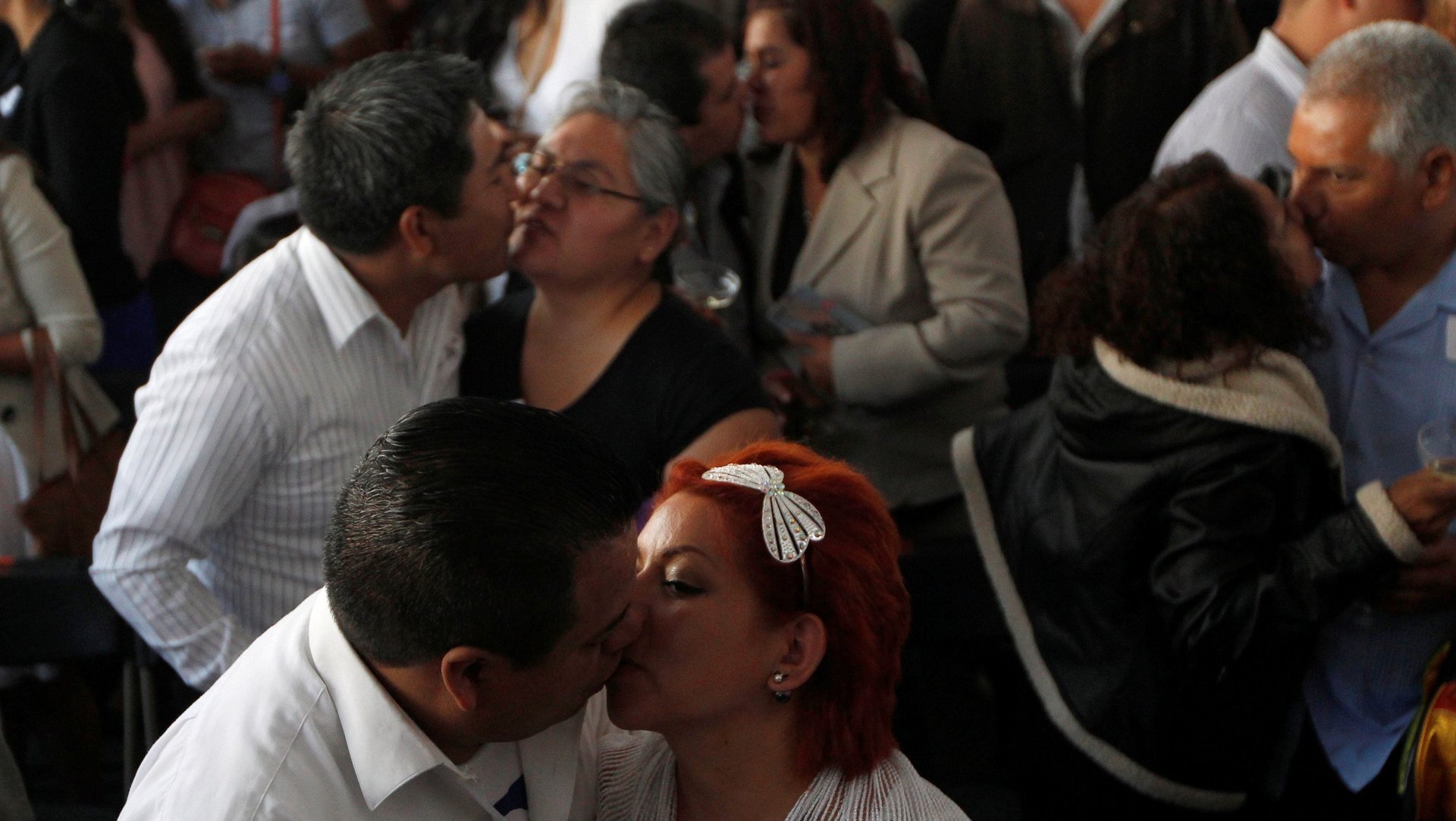Do longer lives mean that one lifelong marriage isn’t enough?
Older people in the US are getting divorced more than they ever have before, with the rate of divorce among those 50 or older roughly doubling in the past 30 years. ‘


Older people in the US are getting divorced more than they ever have before, with the rate of divorce among those 50 or older roughly doubling in the past 30 years. ‘
The unprecedented rise in so-called “gray divorces” presents a fascinating question about the state of marriage in the US. Is this just a blip caused by the Baby Boomer generation, a group of people that has married and divorced more than any other? Or is this the beginning of a fundamental shift in the way Americans see marriage, in an era when people can expect longer lives filled with more transitions between careers, homes, jobs, skills—and possibly relationships too?
In the century before the first Boomer marriages, divorce in the US increased steadily, but very slowly (save for the historic anomaly of a postwar spike in 1946). In 1914, only one marriage in 1,000 officially dissolved; 50 years later, fewer than three in 1,000 did.
But almost as soon as the boomers started marrying in great numbers in the late 1960s, the rate of divorce in the US took a steep upward turn.
The reasons for this have been well-documented. The rise of “no-fault” divorce laws made it legally simpler to dissolve marriages. Women entered the workforce in unprecedented numbers, challenging some marriages ill-equipped for the demands of dual-career couplehood and giving both spouses the economic freedom to end unhappy partnerships. The social stigma surrounding divorce lessened, and a generation that prided itself on its individualism began to demand more from marriage than the economic and social security that previous generations settled for.
“The question began to be ‘Am I happy?’ rather than ‘Are we doing well together?’” said Andrew Cherlin, a sociology professor and marriage researcher at Johns Hopkins University.
Societal hand-wringing over an unstoppable “divorce epidemic” proved premature. From its peak in the late 1970s and early 1980s, the divorce rate began a steady decline that continues to this day.
Subsequent generations have not married and divorced with the boomers’ speed. For one, the median age of first marriage has risen dramatically in the last 50 years, from 23.1 for men and 20.6 for women in 1967 to 29.5 and 27.4, respectively, in 2017. This means some early relationships that might have been short first marriages for baby boomer never cross the threshold of marriage at all. Many of the divorces today are boomers’ remarriages, which are more likely than first marriages to end in divorce.
And while the absolute percentage of people who divorce after the age of 50 is rising, in relative terms it is still small. Most marriages that are at least 25 years long today—in fact, most marriages, period—will end as the marriage vows say they will: with the death of a spouse. The rise of later-in-life divorces could just be the demographic result of a divorce-prone cohort aging into its golden years.
But: What if it’s not?
People live longer, healthier lives than they did decades ago. In 1970, the average 50-year-old was expected to live another 26.1 years. A 50-year-old in 2014 could expect another 31.3.
Longevity researchers argue that an era in which a majority of people can reasonably expect to see their 80th, 90th, or even 100th birthday will demand a rewrite of the life scripts that dictate the pace and timing with which people start and complete educations, careers, and families.
Avivah Wittenberg-Cox, a management consultant and the author of Late Love: Mating in Maturity, sees two distinct waves of transitional adulthood emerging: A first one in Americans’ 20s, in which young people finish their educations and try out different career paths, identities, and relationships; and a second one in their 50s and 60s, after children grow up and leave the nest. Just as longer lives may require transitions to different careers, people may also find themselves more willing to transition away from relationships that no longer suit them.
“I definitely think that we will continue to see more relationship transitions as lives lengthen,” Wittenberg-Cox said. “People will get more skilled at transitions of all kinds, both personal and professional, and will re-invent themselves several times over a longer [life] span.”
People make different decisions based on their self-estimated time horizons. The more time people believe they have ahead of them, the more likely they are to prioritize new experiences when making decisions about how to spend their time. A number of studies find that those who feel they have less time ahead of them—the aging, the ill, those facing some kind of existential threat—prefer to spend it with those they already know and love.
People tend to report greater satisfaction with their lives as they age, and that’s true for relationship quality as well. Couples in long marriages argue less and share more activities after decades together than they do in the busy child-rearing years, even if overall happiness doesn’t change much. It’s a period of romantic renaissance for some couples—but a confirmation that a relationship has run its course for others.
Couples today enter the empty nest phase with more time ahead of them than ever. At least some have been willing to question whether the relationship they had in their first phase of adulthood is worth continuing into the next one.
“It used to be that around this age, you’d say, I’m winding down. You’d say, what’s the point of starting over now?’” said psychologist Laura Carstensen, the founding director of the Stanford Center on Longevity. “Now people may say, ‘Thirty more years of this joker? No way.’”